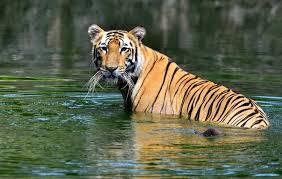Bhutan’s Tiger Population Surge
Bhutan, a small eastern Himalayan country, has achieved a remarkable conservation success by increasing its tiger population by 27% since 2015. According to the most recent survey conducted in 2021 and 2022, there are now an estimated 131 tigers within Bhutan’s borders. This achievement is a result of collective efforts from the Royal Government of Bhutan, local partners, and non-governmental organizations like WWF-Bhutan.
A Decade-Long Journey Towards Tiger Conservation
Bhutan’s journey towards achieving the current tiger numbers began over a decade ago when the country joined a global effort to double the number of wild tigers by 2022. This commitment went hand-in-hand with Bhutan’s promise to preserve over half of its land under forest cover, a decision deeply rooted in the country’s cultural connection with nature.
Collaborative Conservation Efforts and Transboundary Program
To increase wild tiger populations, Bhutan implemented various strategies, including adopting global conservation tools for managing wild tiger sites and equipping rangers with improved monitoring and reporting technology to combat wildlife crime. Additionally, a successful cross-border tiger conservation program with India in the Transboundary Manas Conservation Area (TRAMCA) has led to a significant increase in tiger numbers on both sides of the political border since 2010.
New Insights from the National Tiger Survey
The 2021-2022 national tiger survey brought new insights into Bhutan’s growing tiger population. It revealed tiger sightings in regions not previously known to have tigers and recorded breeding tigers at high elevations, supporting the theory that Bhutan is a source site for tigers in the region.
The Role of Local Communities in Tiger Protection
Local communities play a vital role in protecting wild tigers. Despite tigers occasionally killing livestock in Bhutan, retaliatory killings of these majestic creatures have been kept to a minimum. This tolerance stems, in part, from the values and compassion Buddhism encourages towards nature. However, increasing human-tiger interactions and competition for resources have led to challenges, and WWF-Bhutan has been working closely with communities in the Trongsa District to address human-tiger conflict and its impact on livelihoods.
Empowering Communities Through Conservation Groups
In 2022, Bhutan’s government worked with local communities in Trongsa to establish six Gewog Tiger Conservation Tshogpa (committee) – community-led tiger conservation groups that promote stewardship of tigers, manage human-tiger conflict, and provide livestock insurance. These conservation groups, located in human-tiger conflict hotspots, have made significant strides in fostering human-tiger coexistence and safeguarding both people and tigers.
Month: Current Affairs - August, 2023
Category: International / World Current Affairs


